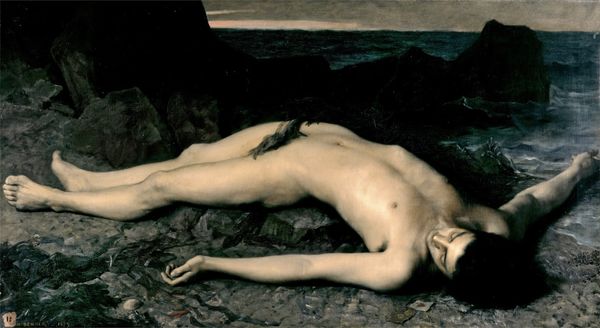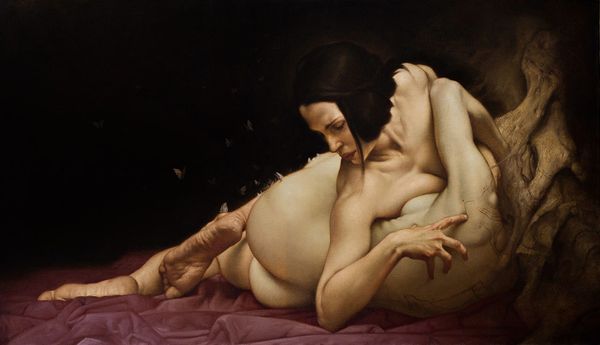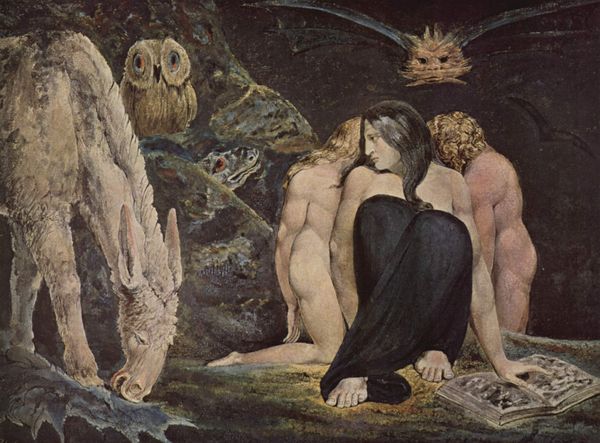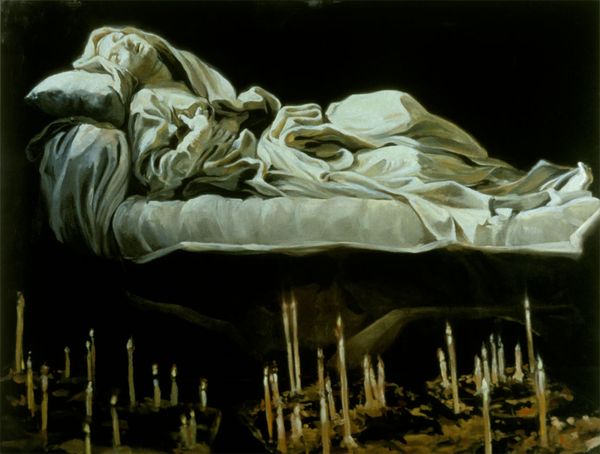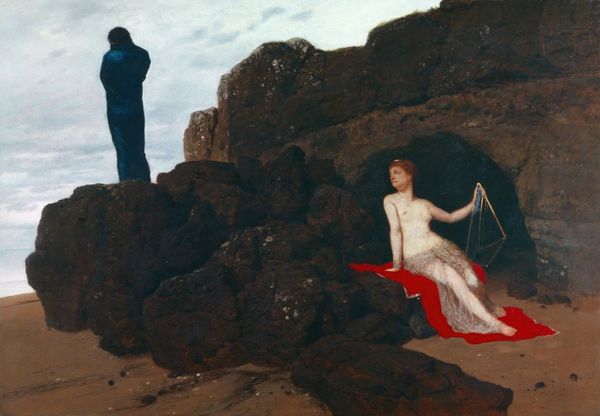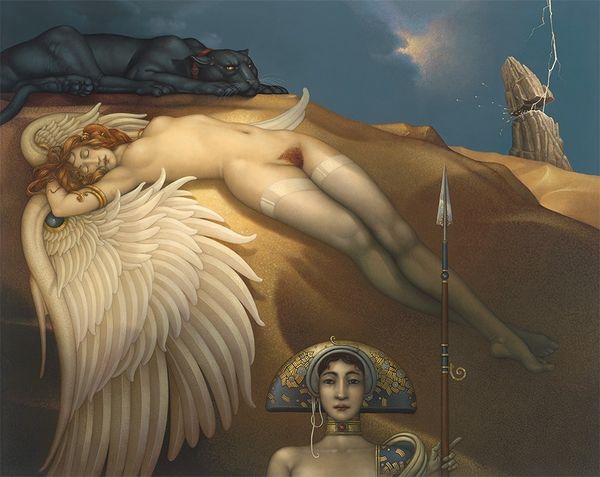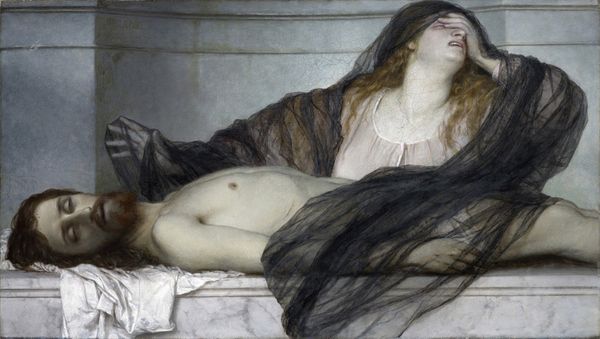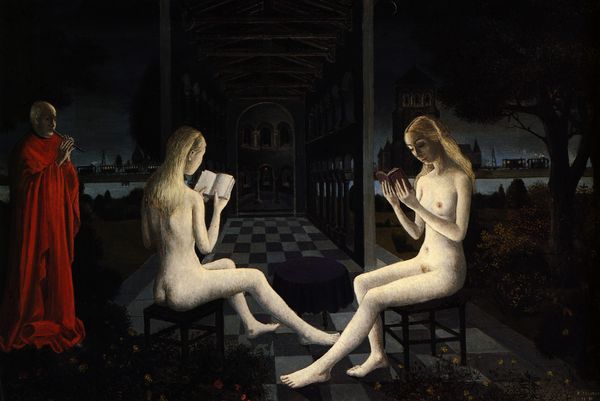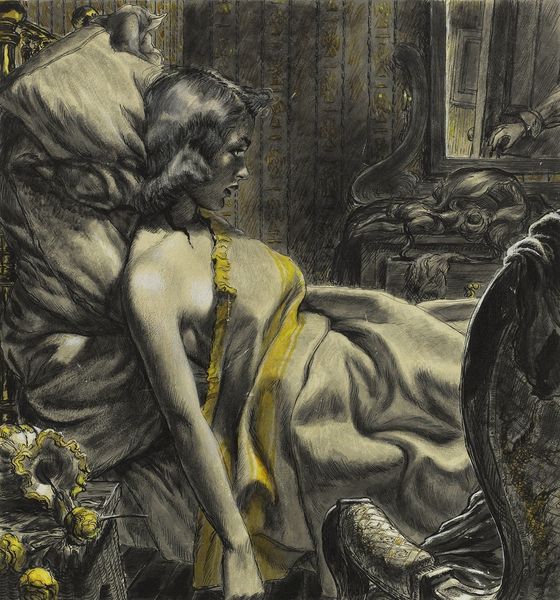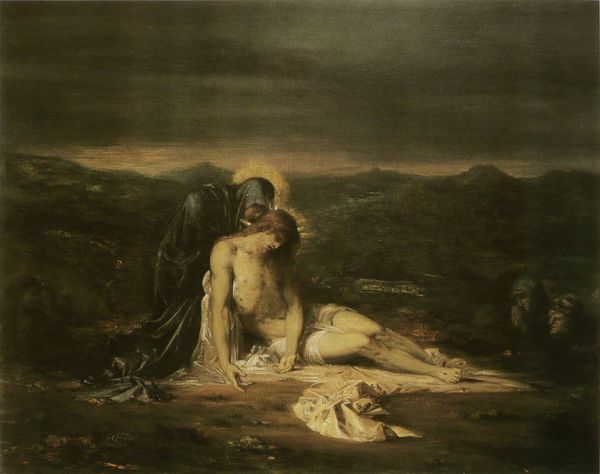
Lemminkäinen's Mother 1897
0:00
0:00
akseligallenkallela
Finnish National Gallery, Helsinki, Finland, Ateneum, Helsinki, Finland
Dimensions: 108.5 x 85 cm
Copyright: Public domain
Curator: What do you see in this evocative painting, Akseli Gallen-Kallela's "Lemminkäinen's Mother" from 1897, rendered meticulously in oil on canvas? Editor: Well, immediately the harsh landscape strikes me – all those little pebbles, the rocky ground. The contrast between that tactile ground and the smooth skin of Lemminkäinen. And the stark reality of the skull… What should we make of that harshness, that material reality placed against human grief? Curator: It’s vital to recognize the context: Finnish nationalism surging in the late 19th century, the Kalevala epic poem providing bedrock. Gallen-Kallela doesn’t simply illustrate the myth, but interrogates the very *making* of Finnish identity. How do you read the underpainting, the visible brushstrokes? Do they reveal the artist's struggle with materials and their transformation into art? Editor: I do see that struggle! It looks like it took a lot of effort! You're right, it’s not just *what* is depicted but how the materiality underscores that. I hadn't thought about it in terms of a Finnish nationalist project, either... But then how does the focus on such earthly, tangible elements connect with something as lofty as national identity? Curator: Perhaps it's about rooting the mythical, and the national, in the real, the tangible experience of the land. Consider the labour involved in creating such a large canvas. What message does Gallen-Kallela deliver by grounding the grand narratives of Finnish mythology in the earth itself? Editor: That's an interesting point - it really humanizes the myth, to see it rendered with such deliberate materiality. I’m now questioning what other ways the material, even the symbolic rocks and earth, are employed in forging this cultural identity. Curator: Exactly. We are invited to question not just what this scene represents but also how its physicality embodies the nation’s labor and historical consciousness. Editor: This makes the artwork even more potent, viewing the materiality as active in nation-building. I hadn't really seen that before, now, this is all very helpful.
Comments
No comments
Be the first to comment and join the conversation on the ultimate creative platform.

